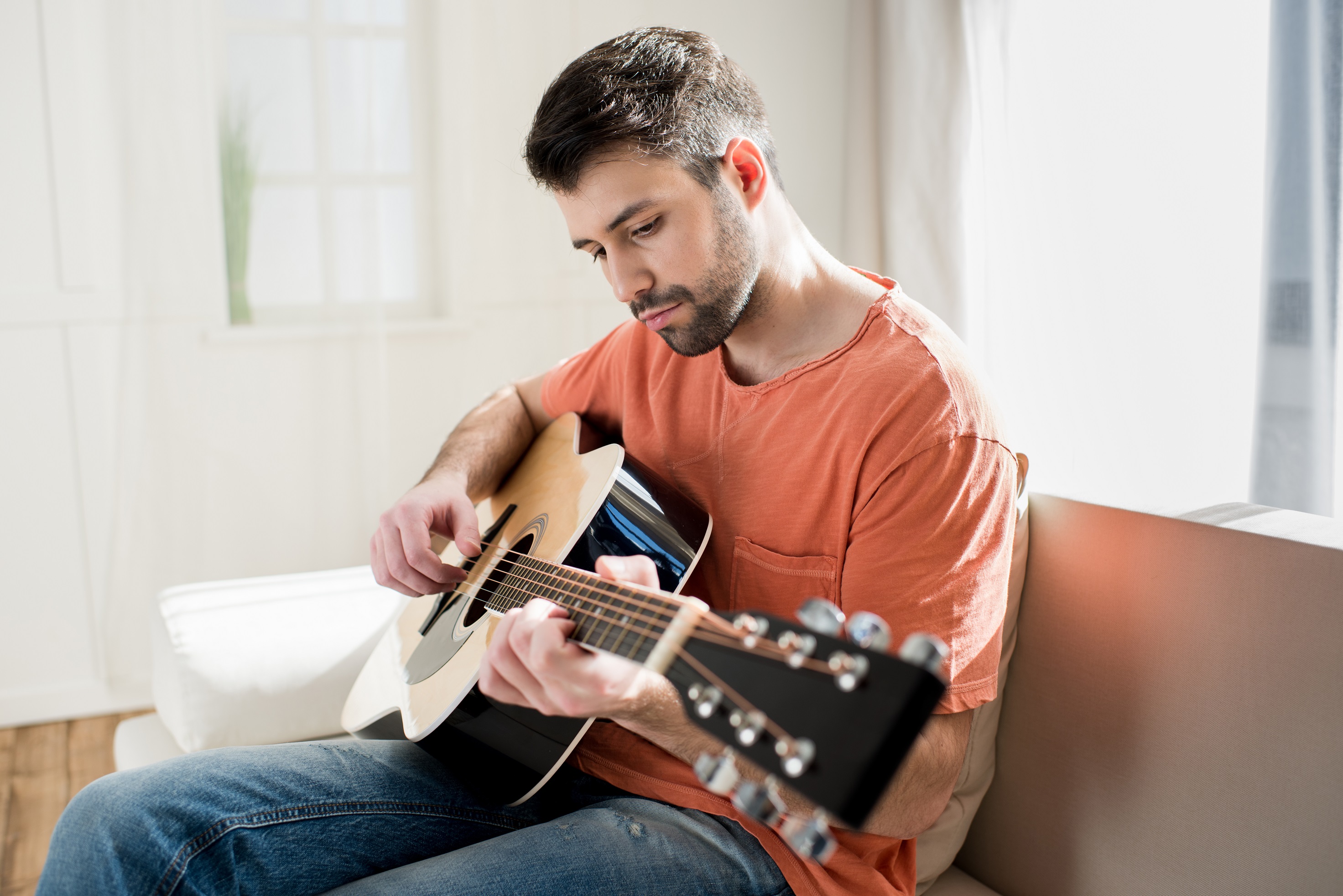6 Ways to Reach Your Guitar Playing Goals Faster

Want to get better at guitar, faster?
Take your playing up a notch by practicing more efficiently.
Learning an instrument takes hard work, and hours of dedicated rehearsal. The best guitarists have all put their time in. Nobody’s talent is all natural.
Efficient practicing will take your playing to the next level quickly. Learning how to practice efficiently takes some discipline.
Follow these six steps, and see faster growth in your abilities.
1) Commit to a regular practice routine.

One of the most common things I hear from students is that they didn’t have time to practice. My response is simple; the more you practice, the better you’ll get.
If you don’t put the time in, you won’t see any results. Plain and simple.
Start by dedicating 20 minutes a day to structured practice. This time is specifically for new chords, scales, and finger exercises. This is not 20 minutes of playing whatever you feel like.
Getting comfortable with chords and scales is crucial to being a great guitar player. The more comfortable you are, the more difficult playing you can handle.
Finger exercises will aid in your learning, too. The more comfortable your fingers are with the instrument, the easier it will be to learn new things.
2) Train your ears.

If you’re working on new, more challenging songs, it’s important to get familiar with it.
Listening closely to music is your first step in developing your ears. Ear training helps you to recognize chord patterns and rhythms more quickly.
Play along to recordings; try to figure out chords just by listening. Then verify using dependable online resources to see if you identified the chords correctly. It will be hard at first, but you’ll start to recognize chords and patterns just by listening.
Being able to recognize these things will help you learn songs more quickly.
Part of being a successful guitar player is being able to fit yourself into a song effortlessly. Studio guitarists can often listen to a song once and write a guitar part to compliment it perfectly. You might not be the next big session guitarist, but with this ability, everyone will want to jam with you.
3) Focus on your weaknesses.

Playing your favorite guitar solo may be fun, but only playing what you’re already good at will keep you from growing.
The key to starting a productive practice routine is knowing what you need to work on.
Let’s say you’re learning the guitar solo of one of your favorite songs. It may be tempting to skip over the most difficult parts and call it a day. Don’t.
Focus on those parts. Practice them until you’ve got them down pat, and then incorporate them into the rest of the solo. You will be much more satisfied with your learning.
Don’t be a one-trick pony. Take your time, work through the difficult parts. You will feel yourself grow much quicker.
4) Repeat.

Absolutely plain and simple, the key to mastering something is repeating it over and over.
Learn what you want to learn properly, then repeat until you can play it perfectly at least five times in a row.
Repeat.
Then try ten times.
Repeat.
Then twenty.
Repeat.
This may sound grueling, but it will pay off in the long run.
Playing a song like ‘Big Love’ by Lindsay Buckingham will impress people. Playing that song flawlessly will impress people much, much more.
Be the kind of guitar player that masters his/her craft and plays as flawlessly as possible. Nobody’s perfect, but it’s a sure-fire way to be the best guitarist you can possibly be.
5) Explore.

This runs parallel with my post on “Getting Yourself Out of a Guitar Playing Rut”.
Take on guitar pieces that challenge you. Learn a new style of playing, try to play a solo better than the original. Play around in a key you’re not used to.
You have to push yourself to grow. Whether it’s jazz, reggae, or Celtic music, there is a wealth of musical styles and influences in every genre.
EXPLORE!!!
Learn as much as you can. You might find a passion you wouldn’t have otherwise found.
Even the oldest, most experienced players come across influences that change their way of playing for the better.
If you are already a gigging musician, find a gig in a style you normally wouldn’t play. This forces you to explore that style of music.
Find a new chord shape, chord sequence, or scale, and try to create something unique.
The point is, there is so much music out there. You never know what you will find. Explore.
6) Have fun.

There is one thing I tell all of my students. Learning an instrument in 50% hard work, and 50% fun.
In reality, that balance is up to you. But, music really has no point if it’s not enjoyable.
When you’ve gone through your routine and your exercises, and you’ve trained your ears, and you’ve developed in your weaker areas, make sure you go back to the songs and styles you enjoy most.
Passion will drive you more than anything. Discipline is incredibly important. Stepping out of your comfort zone is too. Make sure you throw in some extra time to play whatever it is you love to play.
As you grow, the styles you love will evolve, naturally. Make sure you are enjoying the ride.
You have to WANT to be a better guitar player. You WILL NOT get better if you don’t want to.
Find the music that drives you, that motivates you, and you will want to grow.
Be the best guitarist you can be by practicing efficiently. Create a routine, train your ears, push your boundaries, and most importantly, have fun.
Repeat.
Stay connected with new lessons and updates!
Join our mailing list to receive the latest lessons and updates from our team.
Don't worry, your information will not be shared.

